|
Trolled Ballyhoo Rigs for Fishing
|
| Utilize different types of ballyhoo trolling rigs for maximum success. |
| by George Poveromo |
| RETURN TO HOW TO'S MAIN PAGE - CLICK HERE |
 Billfish, among other species, find ballyhoo rigs irresistible. George Poveromo |
|
During the infancy of my offshore trolling, I was rigging ballyhoo modified-headboat-style: that is, a dual O’Shaughnessy hook with the point of the second hook inverted back into the bait. Even if a fish breathed on the bait, I just had to catch it.
|
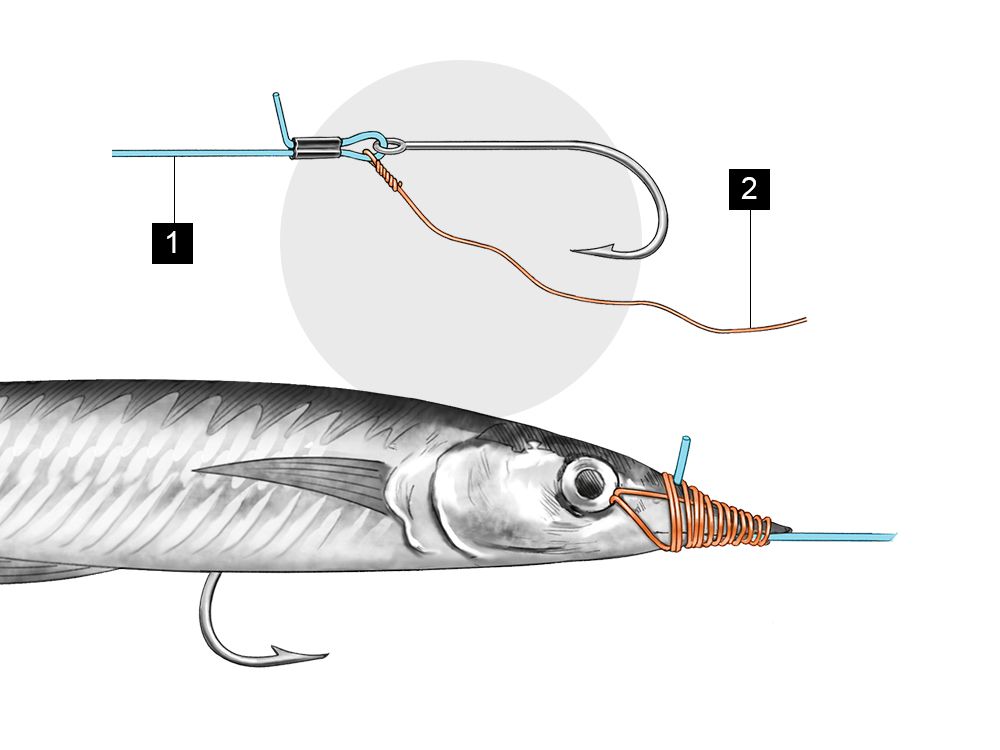 The standard rig for ballyhoo trolling. An all-around option for dolphin, tuna and billfish. Illustration by Steve Sanford |
| This rig, either on mono, fluorocarbon or single-strand wire, represents the standard "go-to" ballyhoo trolling rig. It elicits exceptional action from the ballyhoo, especially when it is limbered up by breaking the backbone, and is well-suited for fish that engulf the entire bait, such as tuna, billfish and dolphin. The long-shank hook also offers some chance of success with wahoo; but if this species is your primary target, opt for single-strand wire instead of mono or fluorocarbon leader. If you want to learn how to rig ballyhoo, start with this technique. How It's Done 1.) Wire or mono leader 2.) Monel or copper rigging wire Leading Circle Hook Ballyhoo Rig |
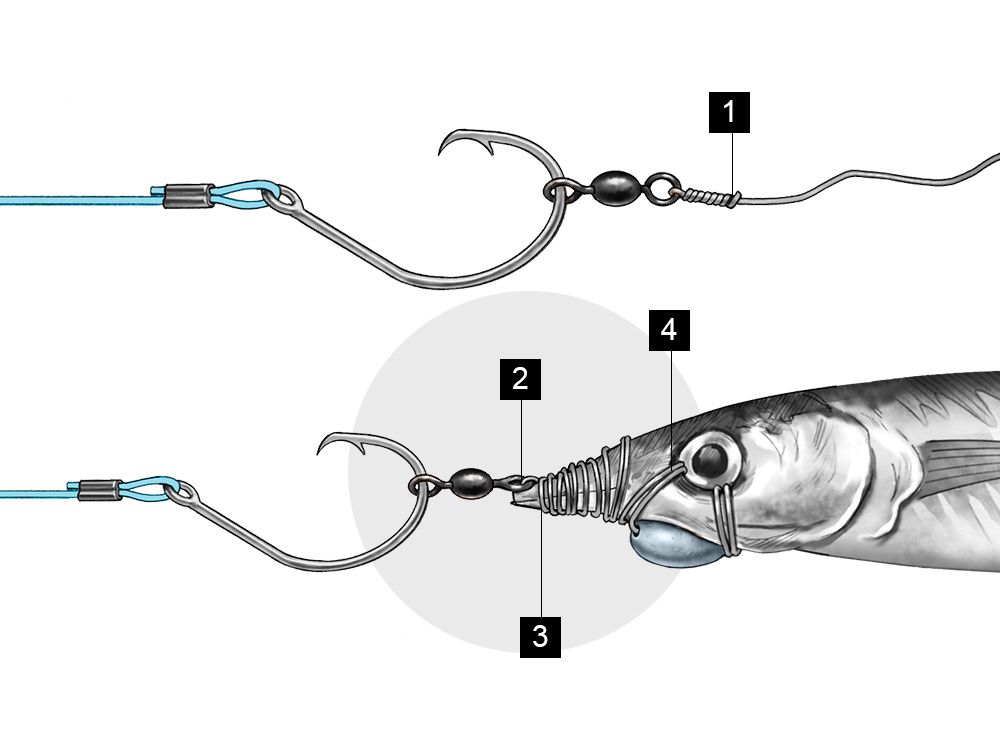 This ballyhoo rig provides great action and fewer pulled hooks. Illustration by Steve Sanford |
|
When targeting billfish, in-line circle hooks are the best ballyhoo rigging techniques to use. They’re less prone to hooking fish deeply and won’t pull free often. Placing the hook ahead of the bait provides a freedom that vastly improves the ballyhoo’s action. It’s critical to use monel wire, not copper, when assembling this rig, for the stiffness and durability required to resist water pressure and keep the rig intact. Avoid offset circle hooks, which don’t track as straight and can hook fish deeply.
|
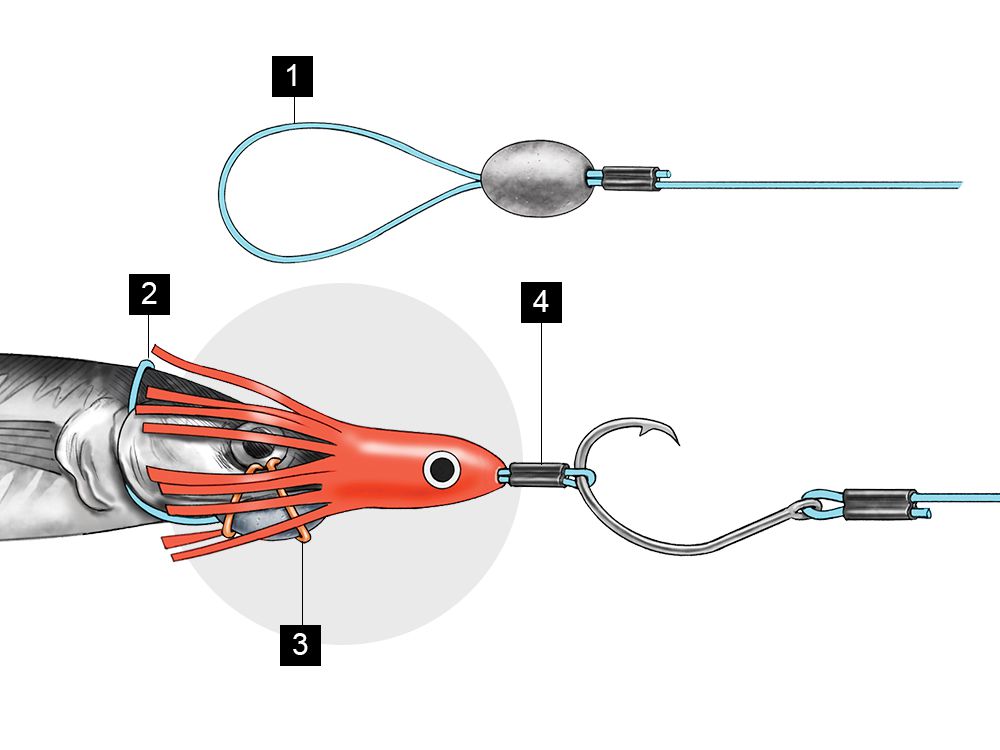 This ballyhoo rig is ideal for adding skirts or lure heads for marlin. Illustration by Steve Sanford |
|
Form a trailer loop of 100- to 300-pound mono just large enough to fit over the ballyhoo’s head, then pull the loop forward under the gill plates. Next, slide an egg sinker over both legs of the loop and crimp them together to lock all in place. Slip a lure head or skirt onto the trailer, then crimp the trailer to the bend of an in-line circle hook. Fish this lure-ballyhoo-circle-hook combo as you would a more traditional circle-hook trolling rig, complete with drop-backs.
|
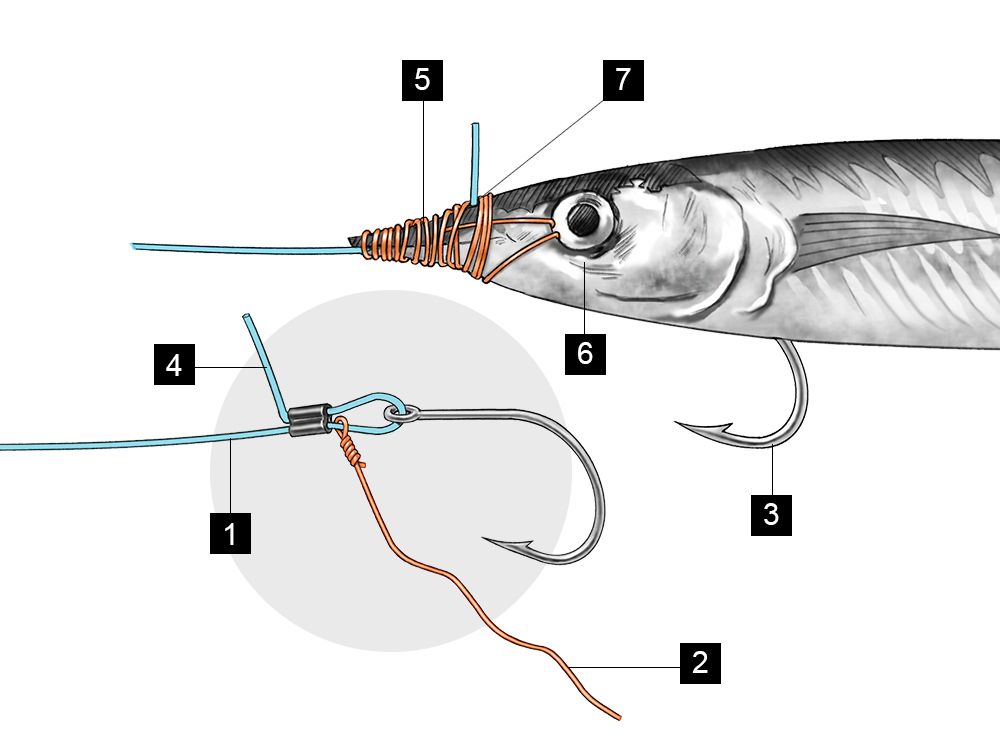 This rig is a winner when dolphin or tuna get finicky. Illustration by Steve Sanford |
|
Primarily a skipping bait for dolphin and tuna, this rig makes the hook less visible and places it at the throat of the ballyhoo for increased action. The short-shank hook may also provide less leverage for fish to throw it. It’s also a good pitch-bait setup for dolphin. Leaders and hooks are generally scaled down when rigging this way. Adding a skirt or small-diameter lure head also goes a long way in enhancing the rig’s sleekness because it further hides the hook.
|
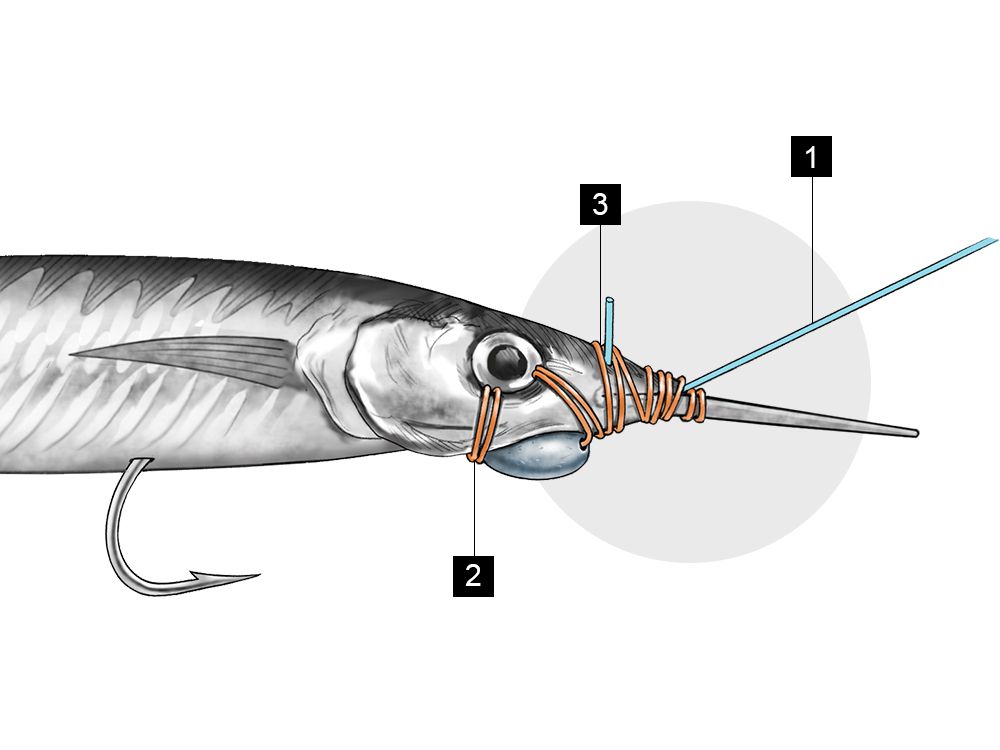 The weight and bill angle create diving action to get ballyhoo deep in the water. Illustration by Steve Sanford |
| This variant makes the bait swim beneath the surface. Add an egg sinker under the chin, split the bill with a knife, then pull the leader up through the split. Wrap the rigging wire around the base of the bill, then twice in front of the leader, and wrap back and finish behind the leader. This creates a diving lip, which with the chin weight, keeps the bait subsurface. How It's Done 1.) Leader passes through split bill 2.) Secure egg sinker with wire wrapped through eye socket 3.) Clip leader tag when finished |
| RETURN TO HOW TO'S MAIN PAGE - CLICK HERE |

